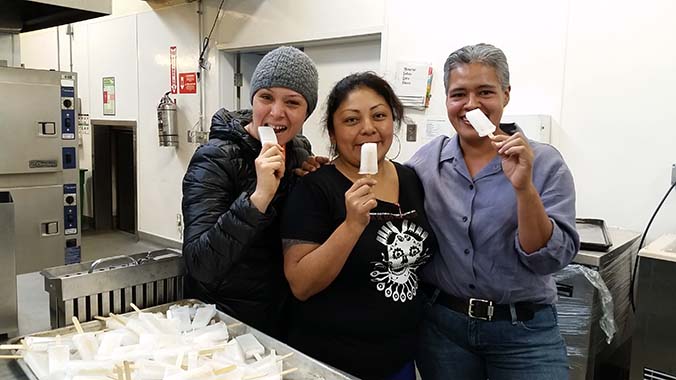
Expanding and Diversifying our Capital Base
By Carolyn Bauer, Chief Risk Officer



By Carolyn Bauer, Chief Risk Officer



By Scott Sporte, Chief Lending Officer
At Capital Impact Partners we put money to work, focusing our efforts on the best ways to use dollars to achieve powerful outcomes. Our lending work at Capital Impact Partners in 2015 increased more than 17 percent above our 2014 level—a success that we celebrate in the present as we look ahead to new levels of accomplishment. This level of lending volume is a source of strength as it supports our organization financially while simultaneously reinforcing communities with increased access to critical housing, services and employment opportunities.

By Ellis Carr, President & CEO

Over the past year, we continued to build upon the organization’s strong financial position, deep partnerships, and innovative product development. We provided ongoing leadership in the health care space, helped a number of charter schools expand their educational offerings, and saw several of our projects come online across Detroit. We also launched two new lending initiatives that will expand access to healthy foods and support age-friendly communities.

By Terry Simonette, outgoing President & CEO

As I think about my 32 years with Capital Impact Partners, I am overwhelmed when I consider the thousands of stakeholders that have made contributions to our work of helping people and communities across the country reach their highest potential.
This army of people and organizations, all part of the ongoing and thriving community development finance sector, includes partners who have worked shoulder-to-shoulder with us; investors whose capital participation helped us stand up a strategy that continues to generate high impact outcomes; foundations whose contributions increase our capacity and enable transactions that otherwise would not be possible; and our many board members whose selfless contribution of their time and talent helped to guide us in our endeavor. In my mind, they are our real heroes.

By Clair A. McDevitt, writer

Since Benjamin Franklin launched the first mutual fire insurance company in 1752, the cooperative sector has seen waves of success in the United States. Dairy and cheese coops were first organized in the early 1800s, and other agricultural cooperatives followed. By the Great Depression, cooperative businesses were developing in urban and rural areas, bolstered by President Roosevelt’s New Deal legislation. In the late 1960s and 1970s, a new wave of consumer food co-ops grew out of the counterculture movement. In 1981 Capital Impact was born out of federal legislation to keep up that momentum. And for the last four decades, Capital Impact has sought to do this through a mix of financing, capacity building and technical support.

By Alison Powers, Program Officer
More than 10,000 low-and-moderate income homeowners are sleeping better at night thanks to our partner ROC USA. Instead of worrying about rent increases or land sales that might force them to move, residents of manufactured-home communities (what many commonly refer to as mobile home parks) across the country have purchased their land and put down roots through ROC USA’s cooperative ownership program.
Since 2008, the nonprofit social venture’s innovative model has spun off 182 resident-owned communities in 14 states, ranging in size from eight to 300 dwellings. The 10,000th home was recently secured at Turnpike Park Cooperative in Westborough, Mass.

By Candace Baldwin, Director of Strategy, Aging in Community
Making a community a great place to live and work while also supporting the needs of low-income and vulnerable older adults is difficult. It takes patience, planning, and a group effort.
With this goal in mind, Capital Impact Partners joined with the AARP Foundation and Calvert Foundation to create the Age Strong initiative. Our goal? To build a first of its kind program that enables all of us – whether individuals or retail operators or philanthropic enterprise – to support strong and vibrant communities that can help low-and-moderate income individuals who are 50 and older to age with dignity, independence, and security.

By Clair A. McDevitt, writer
Picture it: the freezer breaks and you’re scrambling to save all your frozen food. In a home, a big cooler or the generosity of a neighbor may solve your problem – but for a grocery store, the goods in a broken freezer cannot be housed at a neighbor’s house until the freezer is fixed.


By Scott Sporte, Chief Lending Officer
Healthy food financing isn’t just about health.

But the impacts for people and communities are even greater than that.

By Scott Sporte, Chief Lending Officer

Community health centers and clinics (CHCs) play a vital role in this effort by providing preventive and primary care to patients in California – and across the nation – regardless of their ability to pay. Since 2009, health centers have increased the number of patients served from 17 million to 23 million annually. With the ACA’s implementation, however, it is estimated that CHCs will need to serve 35 million patients in the coming years.